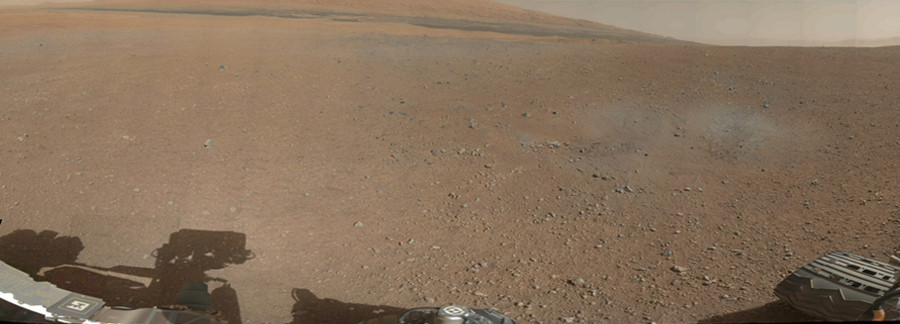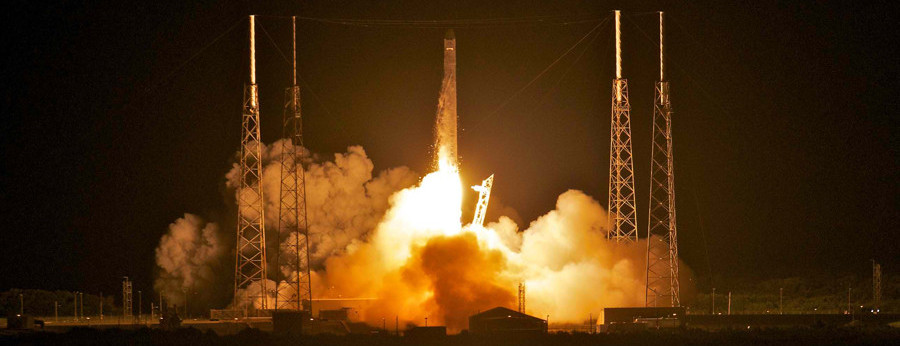New Ideas and Technology Changing Our Lives

Know More Read Less With Visual Journalism
What Comes After The Touchscreen?
The next great gadget might be one you don’t even touch. Here are five experts’ thoughts on what it means, and what the future might look like.

Much of the current crop of gadgetry runs on touchscreens, but it won’t always be that way. We’re already seeing a generation of gadgets that do away with screens entirely, starting with the early success of the Kinect. A more precise gesture-tracking module, the Leap Motion controller, shipped out to nearly 30,000 developers this summer, planting seeds for a post-touch takeover in the next few years. In an interview this summer, Valve’s Gabe Newell put it this way:
You have to look at what’s going to happen post-tablet. If you look at the mouse and keyboard, it was stable for about 25 years. I think touch will be stable for about 10 years. I think post-touch, and we’ll be stable for a really long time — for another 25 years.
But one big question still hasn’t been answered: what is it good for? Post-touch hasn’t found the killer use case that the mouse found with GUIs and the touchscreen found with mobile web browsing and apps — but it’s not for lack of trying. We’ve had a flood of prototypes, demos and art projects, any one of which could flourish into an industry — that is, once every laptop comes with a near-field depth camera. As for which will take off…it’s anyone’s guess. But some guesses are better than others:





GREETINGS FROM THE RED PLANET
‘Curiosity’ Sends Back First 360-Degree Panorama…
SEARCH AND YE SHALL FIND
Your Google Searches Are About To Get Real Personal
Watching the crooks: Researcher monitors cyber-espionage ring
Good guys are keeping an eye on large espionage and botnet campaigns that are stealing corporate secrets from government and private industry and money from peoples’ bank accounts.
LAS VEGAS — Researchers have uncovered a huge amount of malware and registered domains being used by criminals linked to China who are conducting cyber-espionage on a wide range of government, industry, and human rights activists.
The growing menace from these “Advanced Persistent Threats” is detailed in a report unveiled today called “Chasing APT.” In an interview at the Black Hat security conference here, Joe Stewart, director of malware research at Dell Secureworks Counter Threat Unit, said that over the last 18 months he’s been monitoring attacks designed to steal data from organizations around the world. Two primary groups, in Shanghai and Beijing, appear to be behind the attack operations, he said.
The groups were using more than 200 unique families of custom malware. They were also using more than 1,100 domain names registered solely to serve as command-and-control servers or to send spear phishing messages targeting specific workers within a company to entice them to open a malicious e-mail attachment or Web link. No one is safe with carefully crafted and targeted messages, Stewart said.
“You have to to have that kind of paranoia to know anything you get that is unsolicited is suspicious,” he said. Companies should consider opening any unsolicited attachments and links, even from people who are known and trusted, in a virtual machine or a sanitized workstation in which an infection can be isolated.
CYBER IRONY
Experts: U.S. Can Dish It Out But Can’t Take It
BOTNET BUSTUP
New White House Plan Places Cybercriminals In The Crosshairs
Cybersecurity experts have uncovered the so-called “Flame” malware, the largest and most dangerous piece of spyware known to man.
Russia-based cybersecurity firm Kapersky Lab has discovered the world’s largest, most complex, and potentially most dangerous “cyber weapons” ever found. Known as “Flame,” the malware has been detected in machines across the Middle East, with the highest concentration of Flame infections found in Iranian computers, leading experts to believe that the malware is government-created.
At 20 megabytes in size, and with many individual parts, Flame is 20 times larger than either Stuxnet or DuQu, the two piece of malware previously considered the most dangerous.
TO INFINITY AND BEYOND
Privately Funded SpaceX Rocket Takes Off For International Space Station
STAY WHERE YOU ARE!
Major Google Update Means Never Having To Leave Its Site Again
FLASH IN THE PAN?
Surprising Percentage Of Americans Think Facebook Won’t Last
TO INFINITY AND BEYOND!
Google Execs, James Cameron Team Up For Space Exploration Project
FINED
APPLE BITES BACK
Company Rejects U.S. Government’s Charges
INSTABUCKS

Facebook Acquires Instagram For $1 Billion… Co-Founder ‘Psyched’… Zuckerberg: Instagram Will Grow Independently… Twitter Reactions
The human voice as a game changer
Natasha Singer April 2, 2012

Vlad Sejnoha, chief technology officer of Nuance Communications, demonstrates Nuance’s Dragon TV system, which obeys spoken commands to flip channels. Photo: Matthew Cavanaugh/The New York T
Vlad Sejnoha is talking to the TV again.
OK, maybe you’ve done that, too. But here’s the weird thing: His TV is listening.
“Dragon TV,” Sejnoha says to the screen, “find movies with Meryl Streep.”
 Rebecca Paquette of Nuance Communications’ mobile division gives instructions to its voice-activated system in a Ford Explorer. Photo: Matthew Cavanaugh/The New York T
Rebecca Paquette of Nuance Communications’ mobile division gives instructions to its voice-activated system in a Ford Explorer. Photo: Matthew Cavanaugh/The New York TUp pops a list of films like Out of Africa and It’s Complicated.
“Dragon TV, change to CNN,” he says.
Presto – the channel flips to CNN.
Sejnoha is sitting in what looks like a living room but is, in fact, a sort of laboratory inside Nuance Communications, the leading force in voice technology and the speech-recognition engine behind Siri, the virtual personal assistant on the Apple iPhone 4S.
Here, Sejnoha, the company’s chief technology officer, and other executives are plotting a voice-enabled future where human speech brings responses from not only smartphones and televisions, cars and computers, but also coffee makers, refrigerators, thermostats, alarm systems and other smart devices and appliances.
It is a wildly disruptive idea. But such systems are already beginning to change the way we interact with the world and, for better and worse, how we think about technology. Until now, after all, we’ve talked only to one another. What if we begin talking to all sorts of machines, too – and, like Siri, those machines respond as if they were human?
Granted, people have been talking into machines and at machines since the days of Edison’s phonograph. By the 1980s, commercial speech recognition systems had become sophisticated enough to transcribe spoken words into text. Today, voice technology is a fixture of many companies’ customer-service operations, albeit an occasionally maddening one.
But now the race is on to make the voice the sought-after new interface between us and our technology. The results could rival innovations like the computer mouse and the graphic icon and, some experts say, eventually pose challenges for giants like Google by bypassing their traditional search engines.
























